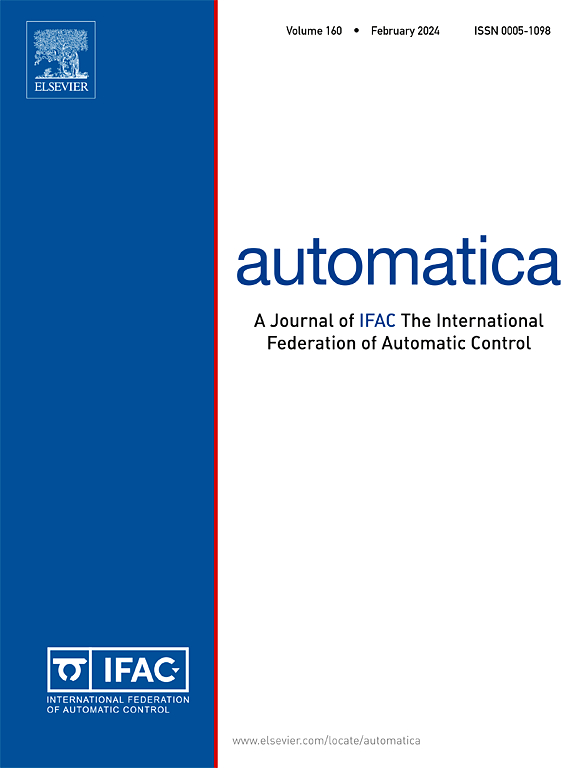惯性导航系统的等变对称性
IF 5.9
2区 计算机科学
Q1 AUTOMATION & CONTROL SYSTEMS
引用次数: 0
摘要
本文从对称透镜的角度研究了惯性导航系统滤波器的设计问题。扩展卡尔曼滤波器(EKF)及其变体是近50年来惯导系统滤波的主要方法。然而,惯性导航系统的最新进展已经利用矩阵李群结构来设计随机滤波器和状态观测器,与经典解决方案相比,这些解决方案显示出优越的性能。在这项工作中,我们探讨了惯性导航系统的各种对称性,包括两种在以前的文献中没有考虑到的新型对称性,并在滤波器设计的背景下讨论了这些对称性的相对优势和劣势。我们表明,所有用于惯性导航的EKF的现代变体都可以解释为最近提出的用于惯性导航问题的不同对称群选择的等变滤波器(EqF)设计方法。作为所提出的对称性的直接应用,我们解决了配备惯性测量单元(IMU)和全球导航卫星系统(GNSS)接收器的车辆的滤波器设计问题,并对不同的现代滤波器解决方案进行了比较分析。我们相信,我们在这里提出的对称性集合捕获了这个问题的所有合理的对称性选择,并且所提供的分析表明了确保完全状态可观察性的轨迹的不同算法的相对现实世界性能潜力。本文章由计算机程序翻译,如有差异,请以英文原文为准。
Equivariant symmetries for inertial navigation systems
This paper investigates the problem of inertial navigation system (INS) filter design through the lens of symmetry. The extended Kalman filter (EKF) and its variants have been the staple of INS filtering for 50 years. However, recent advances in inertial navigation systems have exploited matrix Lie group structure to design stochastic filters and state observers that have been shown to display superior performance compared to classical solutions. In this work, we explore various symmetries of inertial navigation system, including two novel symmetries that have not been considered in the prior literature, and provide a discussion of the relative strengths and weaknesses of these symmetries in the context of filter design. We show that all the modern variants of the EKF for inertial navigation can be interpreted as the recently proposed equivariant filter (EqF) design methodology applied to different choices of symmetry group for the INS problem. As a direct application of the symmetries presented, we address the filter design problem for a vehicle equipped with an inertial measurement unit (IMU) and a global navigation satellite system (GNSS) receiver, providing a comparative analysis of different modern filter solutions. We believe the collection of symmetries that we present here capture all the sensible choices of symmetry for this problem, and that the analysis provided is indicative of the relative real-world performance potential of the different algorithms for trajectories ensuring full state observability.
求助全文
通过发布文献求助,成功后即可免费获取论文全文。
去求助
来源期刊

Automatica
工程技术-工程:电子与电气
CiteScore
10.70
自引率
7.80%
发文量
617
审稿时长
5 months
期刊介绍:
Automatica is a leading archival publication in the field of systems and control. The field encompasses today a broad set of areas and topics, and is thriving not only within itself but also in terms of its impact on other fields, such as communications, computers, biology, energy and economics. Since its inception in 1963, Automatica has kept abreast with the evolution of the field over the years, and has emerged as a leading publication driving the trends in the field.
After being founded in 1963, Automatica became a journal of the International Federation of Automatic Control (IFAC) in 1969. It features a characteristic blend of theoretical and applied papers of archival, lasting value, reporting cutting edge research results by authors across the globe. It features articles in distinct categories, including regular, brief and survey papers, technical communiqués, correspondence items, as well as reviews on published books of interest to the readership. It occasionally publishes special issues on emerging new topics or established mature topics of interest to a broad audience.
Automatica solicits original high-quality contributions in all the categories listed above, and in all areas of systems and control interpreted in a broad sense and evolving constantly. They may be submitted directly to a subject editor or to the Editor-in-Chief if not sure about the subject area. Editorial procedures in place assure careful, fair, and prompt handling of all submitted articles. Accepted papers appear in the journal in the shortest time feasible given production time constraints.
 求助内容:
求助内容: 应助结果提醒方式:
应助结果提醒方式:


